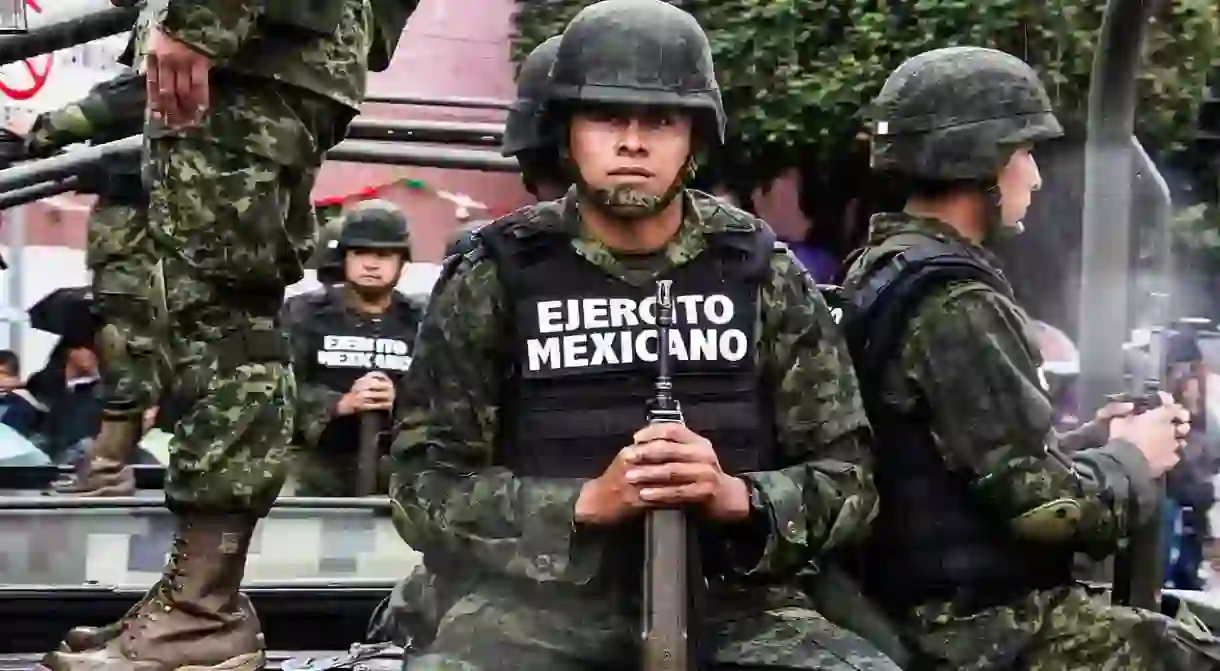Welcome to Mexico's Top Secret Drug War Museum

Since 1985, the Mexican government has run a museum containing a secret collection of artefacts documenting Mexico’s long fight against drug cartels. Exhibits feature bulletproof clothing, gold-plated guns and a shrine to Jesús Malverde, the unofficial patron saint of drug traffickers. The museum is only open to Mexican officials and army cadets, so you’ll need some high-profile connections in the Mexican government if you’re going to make it in yourself.
Officially called the Museo del Enervante (“enervante” means drug), the museum is popularly referred to as the Museo del Narco. Originally, it contained only a few exhibits in a tiny room. Yet the collection has expanded massively since 2006, when then-President Felipe Calderon deployed troops in an ill-fated attempt to stamp out organized crime.

Today, the collection has been moved to a spacious location, with dozens of exhibits displaying some of the most shocking and eccentric objects found in any museum.
At the entrance is a mural that depicts a group of Mexican troops surging across a poppy field with their weapons at the ready. The message is clear: this is a full-blown armed conflict between the state and the drug cartels.

Inside, a photograph shows a vendor selling a marijuana cigar in a Mexican market. Not a recent picture, but one taken in the early 20th century, when drugs in the country were still legal, as they once were in the United States.
Around the corner, is a drug smuggling exhibition that highlights some pretty ingenious tactics. Cocaine, heroin and marijuana are hidden in shoes, concrete blocks, soda cans, picture frames, a Virgin of Guadalupe statue and even an armadillo. There is also a stuffed dog on display, called “Zuyaqui,” who was Mexico’s most successful drug-sniffing canine.
The narcoculture section of the museum displays confiscated cartel property. There are pistols and automatic rifles that have been dipped in gold or silver, or decorated with images of the Virgin of Guadalupe, or Saint Death, the Mexican folk saint. One line of dark blue polo shirts bears the Z logo of the ruthless Zetas Cartel.
The museum also displays some of the extraordinary technology that drug cartels have at their disposal. A briefcase captured from an illicit surveillance team contains gadgets to monitor cellphone calls. There are also several shoulder-mounted rocket launchers, which have the potential to destroy tanks or helicopters.

In another room there is a display of medals awarded by the Mexican military in the war against drug cartels. Honors are granted for soldiers who have captured a high-profile target or a large seizure of drugs.
Shockingly, there is even a cartel equivalent to these military honors. A Zetas medal is emblazoned with a Z on one side and a picture of narco soldiers in action on the other.
However, the strangest exhibit of all is the one displaying the pseudo-religious iconography used by the drug cartels.
At the end of the narcoculture hall is a four-foot statue of a saintly crusader, wearing a hood dotted with precious stones and a golden chainmail suit. But this is no Vatican-sanctioned martyr. The statue is a representation of Nazario Moreno Gonzalez, a trafficker from the drug-war plagued state of Michoacán who built a quasi-religious movement and placed himself at its center.
The eccentric drug kingpin even published a book of sayings in which he espoused a bizarre narco-Christian belief system. To add further to the myth-making, the government announced he had been killed in 2010, but failed to find his body. After another gunfight three years later and the recovery of a corpse, forensic experts confirmed the suspicions that Moreno had kept up his criminal enterprise until his real death in 2014.
Soldiers seized the statue from a cartel safe house owned by the Knights Templars, which Moreno fronted. Today, it serves as a powerful reminder of the extent to which narcoculture and drug cartel myth-making have taken hold in parts of Mexico.
Museo del Enervante, Industria Militar, Lomas de Sotelo, Mexico City +52 552 122 8800














